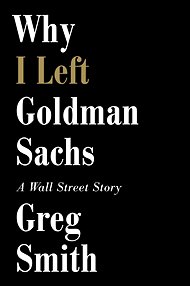Started in 2002 and based in Nashville, Emma had grown quickly. By 2010, it had 90 full-time employees and 30,000 clients. It had recently passed $10 million in sales, but an awareness had begun to set in that its hardware system — built before the cloud even existed — was showing signs of strain. Capacity was running low and programmers had to navigate several layers of the system to update existing features or introduce new ones. These concerns crystallized at the conference when the Emma executives listened to Google employees discuss their plans for Gmail.
Hearing how innovative and agile Google’s software was and how many programmers the company could deploy, the Emma team began to question everything about the company’s ability to compete. “It became fairly obvious that we had to do something,” Mr. Smith said. But how were they going to rethink and rebuild the company while continuing to serve existing customers?
The first step, Mr. Smith said, was to “declare war on our technical-to-nontechnical staffing ratio.” Within a year Emma had ramped up its roster of developers from 20 to 41 — or nearly half of its full-time employees. “If we were to make this a world-class software company,” Mr. Smith said, “we needed to bolster our resources and look and staff up more like a software company.”
Next, the company considered a plan, outlined by consultants already on retainer, that was intended to extend the life of Emma’s existing system. But with a price tag of $250,000, the plan offered little more than a costly Band-Aid. As Mr. Smith and his team considered their options, they found themselves returning to the same question: What would Emma do if it were starting fresh?
Re-engineering both their platform and their products would take time, an anticipated 12 months, and it would cost money. They did not even try to put a price on the project. “It felt more like a commitment to a new way of operating than a one-time project,” Mr. Smith said.
They also knew that any transition process would bring glitches and delays and the real possibility that clients would flee. For an extended period, the company would not be able to adjust its system or processes; it would be stuck with all of the worst aspects of the old platform.
But if Emma did not rework its system, the company would lose long-term competitiveness, leading to a loss not only of existing clients but of future ones as well. In the end, Mr. Smith determined it would be riskier not to start over, noting, “Big fear beats little fear every time.”
When Mr. Smith looked for other small companies that had rebuilt their technology infrastructure, he found few templates. “I will say none of them had taken on the whole thing and certainly not in such a relatively short period of time,” he said.
One that came close is Stratose, a company offering health care cost-containment services in Atlanta. Ten years ago, it completely rewrote its own system, which its president, Tina Ellex, called “the Big Bang theory,” a tough process that required huge blocks of time and a dedicated team. Ideally, Ms. Ellex said, she would have preferred a modular approach. “Anybody would,” she said. “I’ve not seen a lot of companies do a complete rewrite.”
At Emma, the project took 18 months, six months longer than anticipated. And it cost $4.5 million. Preliminary research and design began in the summer of 2010. The company relied primarily on its own engineers and developers, hiring a small outside team to build one set of e-mail tools.
The principle operating guideline was to design a flexible system that would remove the need to do anything like this again. “We didn’t know what the marketplace would look like in five years,” Mr. Smith said. “Also, we didn’t know how databases would evolve in five years either. We couldn’t design for the future, but we could design something that could adapt to what the future will bring.”
Emma chose an application program interface design and a service-oriented architecture, which enabled it to produce and execute updates and new features. The design allows internal services to connect with each other as well as with outside services, which it had little ability to do previously. Emma also re-engineered its database structure to take advantage of cloud-based storage like Amazon’s S3 and new technologies like Redis and CouchDB.

Article source: http://www.nytimes.com/2013/08/15/business/smallbusiness/with-its-technology-aging-a-company-reinvents-itself.html?partner=rss&emc=rss




